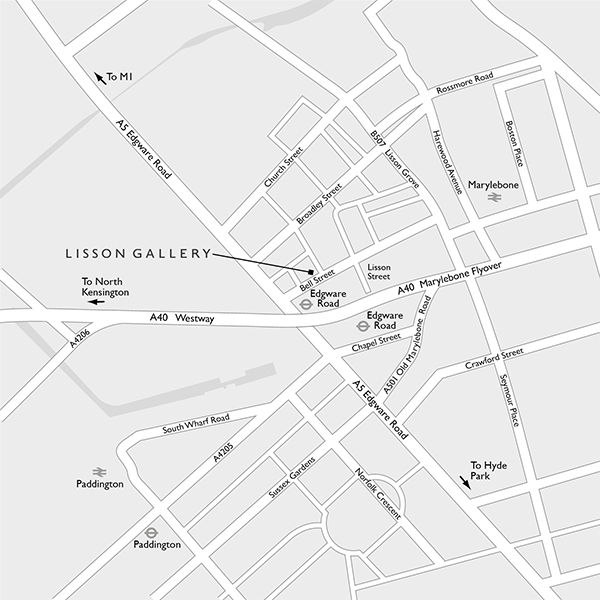When I look into the eyes of a primate, I feel like they can see into the depths of my soul and, beyond their silence, there is a knowing that, perhaps, language and numbers have certified our demise. We are looking for something that had already found us, a state of stasis.
– Ryan Gander, June 2021
Ryan Gander’s new exhibition for Lisson Gallery explores the relationship between our evolutionary past and the ways in which we live today in societies driven by capitalist growth, speed and progress. The exhibition raises pertinent questions; how would the world look if humans had not learnt to count? How do we place value on time in a 24/7 world that demands our constant attention? Included in the exhibition is a major new animatronic installation, a new series of figurative bronze sculptures, several poetic and typographic compositions etched into steel plates, and an over-animated documentary, originally made for the BBC – all speaking to notions of the Self and the dramaturgical nature of the masks we choose to wear, and the masks that choose to wear us.
Read moreUpon entering the gallery, viewers encounter a wall of transparent lockers containing personal effects, a corporate-looking office desk with an electric floor fan, and a digital wall clock. At second glance, all is not as it first appears. The contents of nine of the lockers are duplicated, each replicated and identically arranged across two units. The wall clock merges two displays into a single object, diverging at odd angles, creating an effect of double-vision. A strong odour of damp and urine emanates from behind the office desk, blown by the whirring fan. Slumped beneath the desktop is a life-size female gorilla. Seemingly timid, she displays a desire to learn, using fingers to notate units. The purpose of her act of recording, whether units of time, currency or an accumulation or decline of another quantity, remains unclear.
In the front and side galleries are works from a new series: Know not your place in the world (2023). Two life-size bronze figurative sculptures of the artist’s eldest and middle children are dressed up in an amalgamation of clothes, costumes and props of their own choosing, as opposed to garments suggested by function or social convention. Their gaze is fixed on a mask painted in matt and gloss colours, positioned on the floor at their feet. The sculptures relate to Gander’s investigations into ‘play’ and ‘make-believe’ as catalysts for creativity, no matter your age. This new body of work has expanded from a forthcoming permanent public commission for Elephant Park in the London Borough of Southwark, conceived and developed with the local community.
Screened in the lower floor gallery is Only a matter of time (2020), a reworked documentary exploring our identity in the age of information, rapid technological advancement and attention economy. Through looking at a number of contemporary practices of self-fashioning and -preservation, from self-broadcasting to millions of followers on social media to cryogenically freezing the dead for the future, Gander considers how the enduring question – who are we? – is radically redefined in the 21st century, and whether the idea of our actual selves can keep up with the technology that enables it. Gander revisits the documentary for the gallery context, over-annotating and -animating it so that every time he appears on screen, his face is obscured by a different mask. Each mask takes its style from an abstracted face featured in work by Pablo Picasso – a connection to Gander’s work in the 2017 exhibition Faces of Picasso: The Collection Selected by Ryan Gander at Remai Modern, Saskatoon, Canada.
Displayed throughout the exhibition are steel plates bearing Gander’s poetic and typographic compositions. Everyday. You're my best machine…(Ee Ouw Arh...) (2023) presents the first sounds humans learnt to make 50,000 years ago. Elsewhere in the show, a stainless steel door features a sculptural bas-relief depicting language in multiple registers, from official signage to informal markings and graffiti, as found on a door encountered by Gander and referenced in the work’s title (Temporal Departures (37 St James St South, Manchester), (2023). Following fabrication, a spell is cast onto the sculpture by the artist, transforming it into a magic portal with the potential – dependent on the viewers imaginative and cognitive abilities – to transport one to a desired alternate place and time.
















